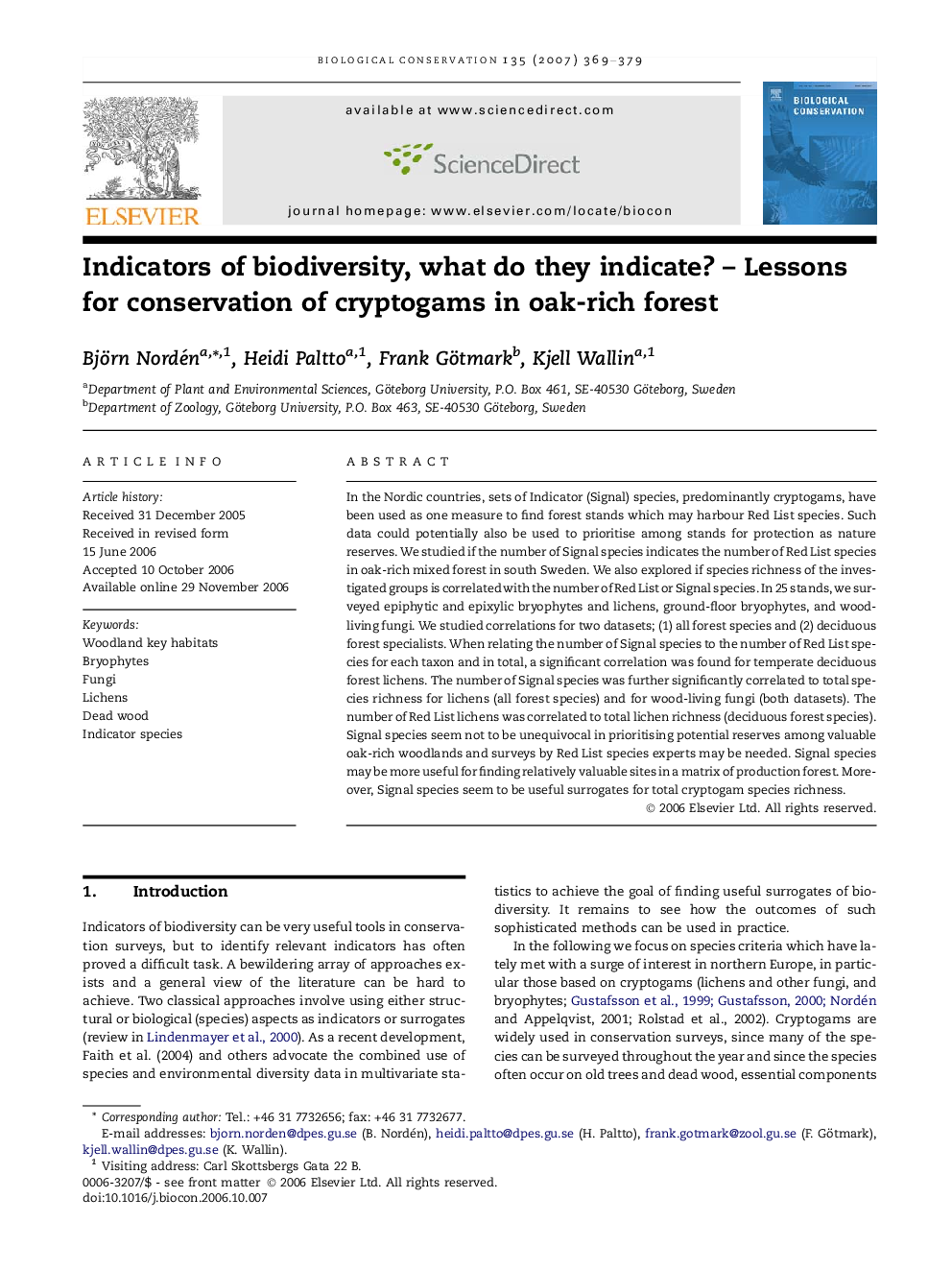| Article ID | Journal | Published Year | Pages | File Type |
|---|---|---|---|---|
| 4387230 | Biological Conservation | 2007 | 11 Pages |
In the Nordic countries, sets of Indicator (Signal) species, predominantly cryptogams, have been used as one measure to find forest stands which may harbour Red List species. Such data could potentially also be used to prioritise among stands for protection as nature reserves. We studied if the number of Signal species indicates the number of Red List species in oak-rich mixed forest in south Sweden. We also explored if species richness of the investigated groups is correlated with the number of Red List or Signal species. In 25 stands, we surveyed epiphytic and epixylic bryophytes and lichens, ground-floor bryophytes, and wood-living fungi. We studied correlations for two datasets; (1) all forest species and (2) deciduous forest specialists. When relating the number of Signal species to the number of Red List species for each taxon and in total, a significant correlation was found for temperate deciduous forest lichens. The number of Signal species was further significantly correlated to total species richness for lichens (all forest species) and for wood-living fungi (both datasets). The number of Red List lichens was correlated to total lichen richness (deciduous forest species). Signal species seem not to be unequivocal in prioritising potential reserves among valuable oak-rich woodlands and surveys by Red List species experts may be needed. Signal species may be more useful for finding relatively valuable sites in a matrix of production forest. Moreover, Signal species seem to be useful surrogates for total cryptogam species richness.
